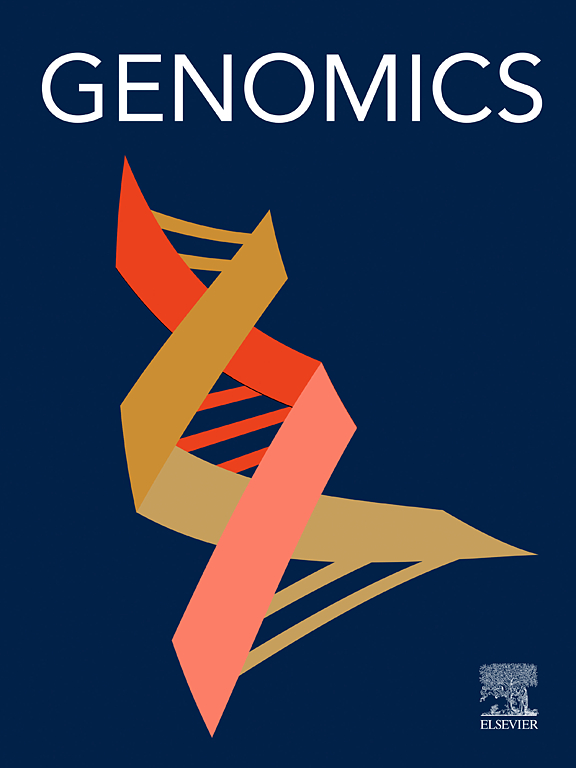通过代谢组学和转录组学分析比较三种Murraya物种的营养谱
IF 3
2区 生物学
Q2 BIOTECHNOLOGY & APPLIED MICROBIOLOGY
引用次数: 0
摘要
牡丹是一种宝贵的植物资源,在医药、工业和园林绿化中发挥着重要作用。尽管它意义重大,但对它的研究和开发利用仍然有限。因此,研究其种质内的代谢产物和代谢途径具有重要意义。在本研究中,我们利用LC-MS全面分析了三种Murraya材料叶片中的氨基酸、核苷酸、糖类和维生素。同时,进行转录组分析以揭示与关键代谢物相关的代谢途径并确定候选基因。我们的代谢组学分析共鉴定出215种代谢物,包括95种糖类、85种氨基酸、25种核苷酸和10种维生素。其中,D-(+)-麦芽糖一水合物、L(+)-阿拉伯糖和dl -木糖通过差异代谢物分析被确定为Murraya材料独特特性的关键候选代谢物。此外,转录组和qPCR分析揭示了11个差异表达基因,这些基因被认为是影响这些关键代谢物差异积累的潜在调节因子。我们的研究表明,在检测的三种材料中,Murraya四聚体显示出更高的医疗和工业应用潜力。这项研究极大地促进了我们对Murraya物种代谢调节机制的理解。此外,它还为药用资源的开发、植物品种的改良、工业利用的扩大和可持续农业实践的推广奠定了重要的科学基础。本文章由计算机程序翻译,如有差异,请以英文原文为准。
Comparative nutrient profiling of three Murraya species through combined metabolomic and transcriptomic analyses
Murraya, a valuable plant resource, plays a critical role in medicine, industry, and landscaping. Despite its significance, research on Murraya, as well as its development and utilization, remains limited. Therefore, investigating the metabolites and metabolic pathways within its germplasm is of considerable importance. In this study, we utilized LC-MS to comprehensively profile amino acids, nucleotides, saccharides, and vitamins in the leaves of three Murraya materials. In parallel, transcriptome analysis was conducted to unravel the metabolic pathways associated with key metabolites and to identify candidate genes. Our metabolomic profiling identified a total of 215 metabolites, including 95 saccharides, 85 amino acids, 25 nucleotides, and 10 vitamins. Among these, D-(+)-Maltose Monohydrate, L(+)-Arabinose, and DL-Xylose were identified as pivotal candidate metabolites contributing to the distinct characteristics of Murraya materials through differential metabolite analysis. Furthermore, transcriptome and qPCR analysis revealed 11 differentially expressed genes, which are proposed as potential regulators influencing the differential accumulation of these key metabolites. Our study reveals that among the three materials examined, Murraya tetramera exhibits heightened potential for medicinal and industrial applications. This research significantly advances our comprehension of the metabolic regulatory mechanisms at play within Murraya species. Furthermore, it lays a vital scientific groundwork that is instrumental for the advancement of medicinal resources, the enhancement of plant varieties, the expansion of industrial utilization, and the promotion of sustainable agricultural practices for Murraya.
求助全文
通过发布文献求助,成功后即可免费获取论文全文。
去求助
来源期刊

Genomics
生物-生物工程与应用微生物
CiteScore
9.60
自引率
2.30%
发文量
260
审稿时长
60 days
期刊介绍:
Genomics is a forum for describing the development of genome-scale technologies and their application to all areas of biological investigation.
As a journal that has evolved with the field that carries its name, Genomics focuses on the development and application of cutting-edge methods, addressing fundamental questions with potential interest to a wide audience. Our aim is to publish the highest quality research and to provide authors with rapid, fair and accurate review and publication of manuscripts falling within our scope.
 求助内容:
求助内容: 应助结果提醒方式:
应助结果提醒方式:


